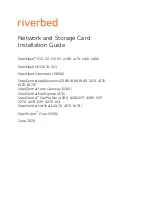
R01UH0822EJ0100 Rev.1.00
Page 778 of 1041
Jul 31, 2019
RX13T Group
24. I
2
C-bus Interface (RIICa)
24.7.3
Device-ID Address Detection
The RIIC module has a facility for detecting device-ID addresses conformant with the I
2
C-bus specification (Rev. 03).
When the RIIC receives 1111 100b as the first byte after a start condition or restart condition was issued with the
ICSER.DIDE bit set to 1, the RIIC recognizes the address as a device ID, sets the ICSR1.DID flag to 1 on the rising edge
of the eighth SCL clock cycle when the following R/W# bit is 0, and then compares the second and subsequent bytes
with its own slave address. If the address matches the value in the slave address register, the RIIC sets the corresponding
ICSR1.AASy flag (y = 0 to 2) to 1.
After that, when the first byte received after a start or restart condition is issued matches the device ID address (1111
100b) again and the following R/W# bit is 1, the RIIC does not compare the second and subsequent bytes and sets the
ICSR2.TDRE flag to 1.
In the device-ID address detection function, the RIIC sets the DID flag to 0 if a match with the RIIC’s own slave address
is not obtained or a match with the device ID address is not obtained after a match with the RIIC’s own slave address and
the detection of a restart condition. If the first byte after detection of a start or restart condition matches the device ID
address (1111 100b) and the R/W# bit is 0, the RIIC sets the DID flag to 1 and compares the second and subsequent bytes
with the RIIC’s slave address. If the R/W# bit is 1, the DID flag holds the previous value and the RIIC does not compare
the second and subsequent bytes. Therefore, the reception of a device-ID address can be checked by reading the DID flag
after confirming that TDRE flag is 1.
Furthermore, prepare the device-ID fields (3 bytes: 12 bits indicating the manufa 9 bits identifying the part + 3
bits indicating the revision) that must be sent to the host after reception of a continuous device-ID field as normal data for
transmission. For details of the information that must be included in device-ID fields, contact NXP Semiconductors.
















































